Alexander 2.11
Alexander the Great (*356; r. 336-323): the Macedonian king who defeated his Persian colleague Darius III Codomannus and conquered the Achaemenid Empire. During his campaigns, Alexander visited a.o. Egypt, Babylonia, Persis, Media, Bactria, the Punjab, and the valley of the Indus. In the second half of his reign, he had to find a way to rule his newly conquered countries. Therefore, he made Babylon his capital and introduced the oriental court ceremonial, which caused great tensions with his Macedonian and Greek officers.
King of Asia
Prolonged war
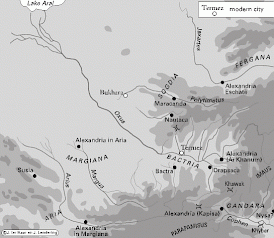
The vanguard of the Macedonian army was now in Hecatompylos in Parthia and the rank and file must have wondered what had caused the sudden change in Alexander's mind. He had insulted Darius III Codomannus on many occasions, had pursued him without mercy, and now ordered a state funeral and announced a new war to punish the regicides. This was to be a very dangerous campaign. A year ago, the Macedonians had left the Mediterranean world that they knew well and they had marched through regions of which they had at least known something. Now they were about to enter a truly unknown country of which they knew only one thing: that it was inhabited by formidable mounted archers.
The new war plans must have come as a great surprise. Only a few weeks ago, Alexander had sent a part of his army back to Greece. Many of the Macedonian soldiers had been under arms for twenty years or even longer; they longed for their homes and did not like the new campaign, which was conducted for the benefit of the Persians. They had not been marching 8,000 kilometers, they had not been fighting three major battles and countless skirmishes, they had not been besieging towns to share their conquests with the conquered. They were disappointed.
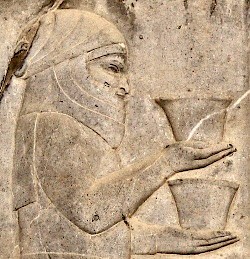
The officers must have understood that the eastern war was necessary to obtain tranquility in the West; Alexander needed the support of the Persian aristocrats and had already decided that the only way to obtain it was to become their king, which meant, among other things, avenging the death of Darius III. Besides, no one could claim to be the successor of the Persian kings if he did not control Bactria; it had, after all, been one of the most important parts of the old empire.
The power of Bessus - or, to use his royal name: Artaxerxes V - was based on the mounted archers of Bactria and Sogdia, satrapies that are more or less identical to the north of modern Afghanistan, and Uzbekistan. These warriors were swift and could strike anywhere they wanted; and this forced the Macedonians to invade Hyrcania, the tropical region southeast of the Caspian Sea. It was not a very important satrapy, but if it fell into Bessus' hands, it would give him a chance to attack Alexander's lines of communication when the Macedonians were moving to the eastern satrapies.
Hyrcania
The Hyrcanian campaign took place in August 330. Two battalion commanders of the phalanx, Craterus and Coenus, defeated the mountain tribes of the Elburz that were known as the Tapurians and the Mardians. After the pacification of the new province of Alexander's realm, Amminapes, a Parthian who had lived at the Macedonian court during Alexander's youth and had been responsible for the surrender of Egypt (above), was appointed as satrap.
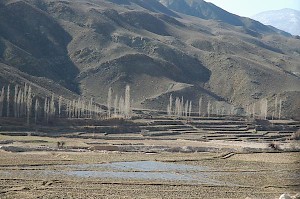
Now that it was clear that Alexander seriously wanted to punish Bessus, many adherents of Darius came over to the Macedonians. Among them was Artabazus, the father of Alexander's mistress Barsine. He was to stay at the royal court and must have advised Alexander on several important occasions. Another adviser was Bagoas, according to the Roman author Quintus Curtius Rufus "an exceptionally good-looking eunuch in the very flower of his youth" who had been a favorite of Darius, and now became the lover of another king. Amminapes, Bagoas, Barsine and Artabazus were bilingual, which explains their importance. From now on, many Persians were to be found at the Macedonian court, including, for example, a brother of Darius III, Oxyartes. They are the silent people behind Alexander's throne.
During the Hyrcanian campaign, a sinister incident took place. One of the mountain tribes, caught Alexander's war horse Bucephalus during a skirmish. Immediately, the Macedonian king announced that he would come to them and would kill them all. The tribesmen understood that a threat of genocide was to be taken serious and returned the horse immediately. It is one of the moments that we can see, as it were, "through our sources" and catch a glimpse of what must have been the real Alexander.
The king's new clothes
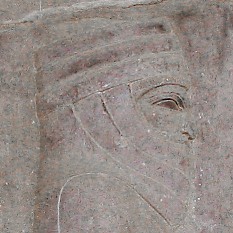
The next stage in the war was the march along the road that was to be called the Silk road, through Parthia to Aria. It was at Susia (modern Tûs near Mashad) that the Macedonian high command had to take a very important strategic decision. The generals knew that their enemy Bessus was in Bactria, and the shortest way to that satrapy was the Silk road, which led through the Kara Kum desert to the oasis Margiana and to Bactria. The other road was a detour: through Aria, Drangiana, Arachosia and Gandara and then across the Hindu Kush mountains. The first route was easier and shorter, but exposed to hostile attacks of Bessus' mounted archers; therefore, Alexander decided to go to the south.
The satrap of Aria, Satibarzanes, had been one of the murderers of Darius, had surrendered, had been pardoned, and had then attacked a Macedonian contingent. Alexander was quick to punish the Arians, but too late arrest Satibarzanes. However, he took his capital, Artacoana, and sold the inhabitants as slaves. The town was refounded in called Alexandria; it is now called Herât. The new satrap was a Persian, Arsames, son of Artabazus.
It was in August-September 330 that the first complaints about Alexander's behavior were voiced. They had to with his dress. Immediately after the death of Darius, Alexander started to wear a diadem, a girdle and a white-and-purple striped tunic. Several Greek authors write that these were the Persian royal vestments, but that is not the whole truth: Alexander had picked only three pieces of the royal clothes. He did not wear the sleeved purple overcoat (candys) or a trouser. There are no indications whatsoever that he ever carried the Persian regalia: the tiara (a kind of turban) or the quiver, bow and arrows. When the king of Asia appeared in public, nobody carried the sacred fire in front of him.
Another common misconception is that Alexander was the first Greek monarch to dress himself in a multicolored tunic and to wear a diadem. Archaeologists have found diadems and golden garlands in Macedonian tombs that were built well before Alexander's reign and it is known from literary sources that the rulers of Syracuse had been wearing Persian vestments for more than half a century (above). They had done so because they wanted to stress their divine status, and compared to their extravaganza, Alexander was dressed modestly.
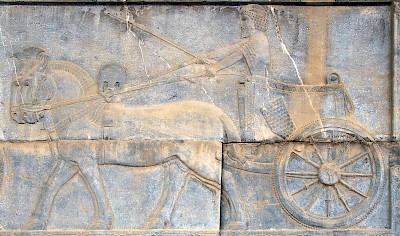
Although the diadem and the striped tunic were nothing new and the least offensive parts of the Persian royal wardrobe, the Macedonians did not like that their king had started to wear them. According to them, the son of Zeus Ammon was now dressing like a god. Alexander knew that his men would be offended, but he needed to wear the diadem, the girdle and the tunic: it was a way to show to the Persians that he really wanted to be their king. He was now also driving a chariot. It was inevitable.
Religious problems
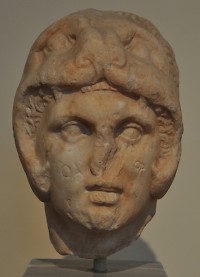
Although Alexander's policy to appease the Iranian population was sincere, it was doomed. He tried to be the kind of king the Persians wanted, but at too many occasions, he did not understand Persian behavior, and what trust he created, could be destroyed by one inconsiderate act.
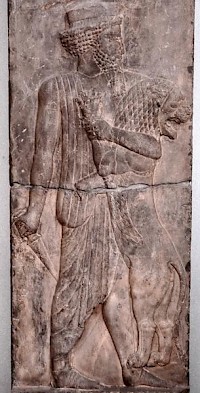
For example, Alexander's portraits - coins and sculpture - were extremely offending to his new subjects: they showed their new king as Heracles, wearing a lion's pelt. If Alexander had wanted to offend Zoroastrian feelings, he could not have invented a better tool: on these coins, he resembled one of the helpers of Angra Mainyu, "the hostile spirit", the personification of evil and the eternal opponent of Ahuramazda.
It is interesting to compare the motif of the "royal warrior", which is one of the most important themes in the Achaemenid art: a king killing a lion. (A variant can be seen to the right: the seal of king Darius I the Great.)
Fortunately, there were always people like Artabazus, Barsine, Pharnabazus, Amminapes and Bagoas, who would explain that the insult had not been intended, but they were fighting a losing battle. There were too many mistakes; we will see other examples below. That at the end of Alexander's reign only one of the Macedonian commanders had bothered to learn Persian, will not have improved the dialogue between the two cultures.
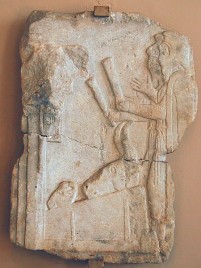
Alexander's relation to the Zoroastrian religious specialists known as Magians was complex. Our Greek sources frequently mention these men at Alexander's court performing their usual incantations and prayers. This proves that there was collaboration and we will see below that on at least one occasion, Alexander asked the Magians for advice. It is also certain that Alexander's teacher, the philosopher Aristotle of Stagira, published a book that was called The Magian. It is now lost, but it is mentioned in the Lives of the Eminent Philosophers by Diogenes Laertius and it probably contained a positive evaluation of the teachings of the Magians.note
On the other hand, the Zoroastrian tradition is unanimous that Alexander "killed several high priests and judges and priests and the masters of the Magians and upholders of the religion",note "quenched many sacred fires",note and "caused great devastation.note This "evil-destined and raging villain"note was not just regarded as a collaborator of Angra Mainyu, but as one one of the calamities that the evil one had sent to earth to destroy what is good. Alexander even received the surname Guzastag, the Accursed, a title that had until then only been used to describe Angra Mainyu. It is possible that several apocalyptic texts from the Avesta were composed during the reign of Alexander.
Several scholars have argued that the native population of Iran believed that Darius was not really dead and would come back victoriously with a new army. This is based on the erroneous reading of a cuneiform text from Babylon known as the Dynastic prophecy. In fact, the future king is identical to Darius.
It is probable that both types of evidence - Greek and Zoroastrian - are reliable, and that the contradiction reflects a division among the Iranian religious leadership. Some considered collaboration the best course to ensure the future of their faith, others thought that it was more honorable to resist the invader. The latter may have been the ones who suffered from the "killer of priests".
At that stage of Zoroastrian history, the sacred texts were learnt by heart, not written down. Magians were the living memory of their religion. When a Magian was killed, his knowledge was gone, and it is almost certain that many ancient traditions did not survive the Macedonian conquest and were forever lost. Fortunately, the most important texts, the Gâthâs written by the legendary prophet Zarathustra, survived, and there are indications that at least some Zoroastrians fled to Drangiana, where they could discuss their sacred poetry, teach each other what they remembered, and refound Zoroastrianism.
The king of Asia sat on the fence: he had to be a Persian to the Persians and a Macedonian to the Macedonians. The balancing act was nearly impossible: if he wanted to rule, he had to root out native opposition - and snub Iranian religious opinion. On the other hand, if he used Persians as satraps and wore a piece of oriental dress, the Macedonians would grumble.
The Philotas affair
Macedonian discontent probably played a role in the Philotas affair, a double conspiracy that was discovered when the vanguard of Alexander's army was at Drangiana, in October 330. The accused, Philotas, was a son of Parmenion and the commander of the Companion Cavalry, and therefore one of the most important men in the Macedonian army. He was said to have known of an earlier conspiracy and not to have reported it. At first, Alexander forgave Philotas, but the next day, after new accusations by the phalanx commanders Craterus and Coenus, he organized a trial - the army exercised capital jurisdiction in Macedonia - where he accused the man; the court found Philotas guilty and the executioners speared or stoned him and a few others to death. To commemorate the event, Alexander renamed the city where it had happened Prophthasia, Anticipation (modern Farah).
It looks a bit odd, a trial in which infantry commanders accuse the leading cavalry commander, yes, two conspiracies at the same time. One suspects that Alexander had started to behave like a paranoid dictator who saw conspiracies everywhere. Moreover, our sources are vague about the motive of the plots. Nonetheless, there is no reason to doubt that Alexander's life had really been threatened. There is, at least, no doubt that the first plot was real: the conspirators were ordinary Macedonian soldiers, who probably wanted to go home. Philotas may indeed have known of this first plot, and it is possible that he wanted to see what happened: if the soldiers' attempt failed, nothing was lost, if it had been successful, the army would chose him (or his father) as its commander and king.
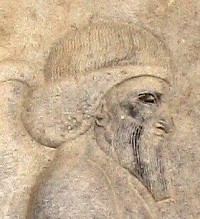
We will never know for certain what Philotas' plans were, but the fact that soldiers wanted to kill their successful commander is significant. It shows that the rank and file were starting to feel uneasy about the prolonged war and their king's presumed orientalization. Actually, we cannot be certain about the conspirators' motive, but this hypothesis is plausible. Moreover, it is remarkable that Alexander suddenly departed from his policy of appointing Persians as satraps: Arachosia received a Macedonian governor. This strongly suggests that there had indeed been protests against Alexander's "philobarbarism".
The execution of Philotas made the murder of his father Parmenion inevitable. The old general was in Ecbatana, where he controlled the road from the Mediterranean to the East, large sums of money and many troops, reinforcements that were delayed. He was too powerful to remain alive. Alexander sent an express messenger, whose duty it was to be at Ecbatana before the news of the death of Philotas reached his father. The courier gave letters to the commanders of the reinforcements, and they killed the old general, who never knew why. According to the Alexander Chronicle, this happened in December.
It may be noticed that the Babylonian Astronomical Diary contains a tantalizingly brief reference that may be read as an account of an invasion in Babylonia by Arab tribesmen. This is interesting, because it may have been triggered by the murder of Alexander's best general.
After the Philotas affair, our sources do not mention generals like Parmenion anymore. Instead, there were several commanders: Perdiccas, Craterus, and Coenus for example, and Clitus and Hephaestion, who were to share the command of the Companion Cavalry. Alexander may have found their rivalries comforting. As long as they were quarreling about his favors, they were no threat to his own position.
The Upper Satrapies
Feeling safe again, Alexander could continue his march to the East, into modern Afghanistan. In December, the reinforcements, commanded by Clitus, united with the vanguard in Arachosia, and after its capital Kapišakaniš had been renamed (Alexandria, modern Kandahâr), the young Macedonian king led his army, now 60,000 men strong, through the country along the Tarnak river. It was a difficult march, because supplies could not be moved by wagon and pack animals would frequently fall on the dangerous, snow-covered roads.
At this moment, a messenger told the Macedonian high command that Satibarzanes had returned to Aria and was enticing his former subjects to revolt. This was a serious threat to Alexander's rear, and he sent 6,000 men back to Aria, commanded by his trusted Persian officer Artabazus and Erigyius. They made quick work of Satibarzanes' invasion; Erigyius killed him in a single combat. However, Aria remained unquiet for two more years.
Marching along the Tarnak the Macedonians reached Gandara (also called Parapamisadae), the country near modern Kabul, in April 329. It must have been tempting to follow the river Kabul and go to India, but Alexander resisted the temptation. He refounded a Persian city and called it Alexandria in the Caucasus (modern Chârikâr); many Macedonian and Greek veterans were left behind. The city was to serve as base for future operations on the other side of the Hindu Kush mountains.
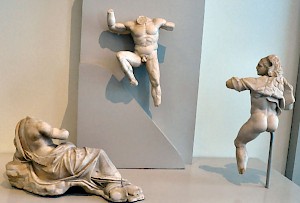
The historians of Alexander's campaign tell how the Macedonians saw the cave of Prometheus (text). According to Greek myth, Prometheus was the demi-god who had given fire to humankind and had been punished by the supreme god Zeus. He had been bound to a mountain and Zeus' eagle had come every night to devour Prometheus' liver. It is unclear what the Macedonians have seen and how it reminded them of this story, but it has been argued that they heard the myth of the eagle Sena, which is mentioned in the Avesta. It is also referred to by the Chinese traveller Xuan Zang mentions, exactly at this place, the eagle Suna. The Greek author Eratosthenes of Cyrene, however, was skeptical.